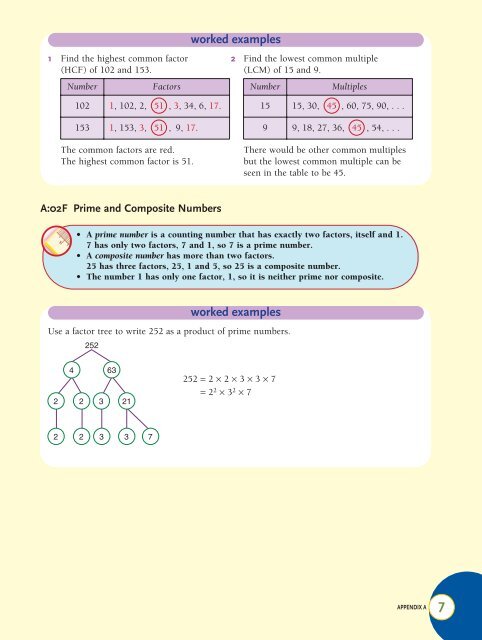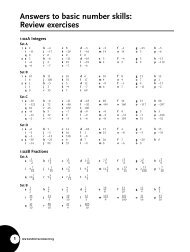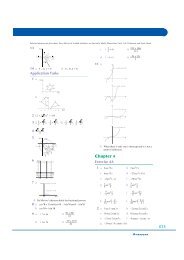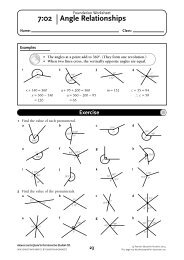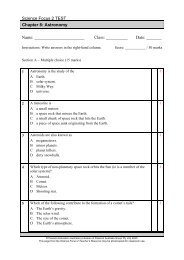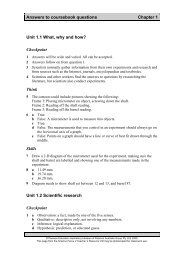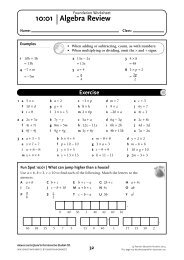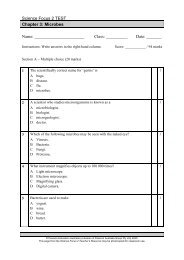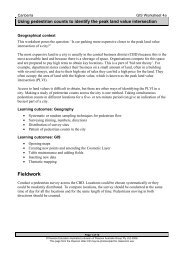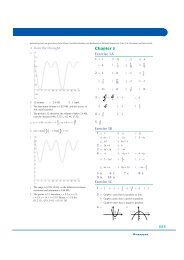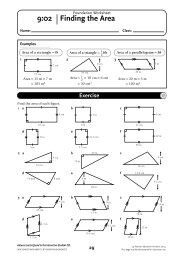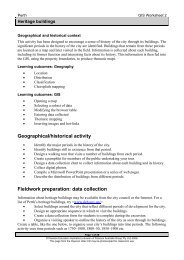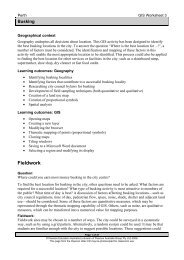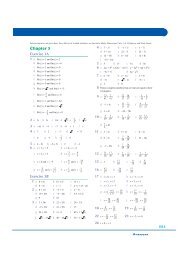Name of group Pattern Diagram or explanation Comment or rule Square numbers 1, 4, 9, 16, . . . A counting number times itself, , , , , ... eg 1 × 1, 2 × 2, 3 × 3, etc. (n 2 ) Triangular numbers Hexagonal numbers Fibonacci numbers Palindromic numbers 1, 3, 6, 10, 15, . . . 1, 7, 19, 37, . . . 1, 1, 2, 3, 5, 8, . . . Examples 929, 7337 , , , , ... 1, 1 + 2, 1 + 2 + 3, 1 + 2 + 3 + 4, . . . The sum of the first n counting numbers. , , , ... 1, 1 + (6 × 1), 1 + (6 × 1) + (6 × 2), 1 + (6 × 1) + (6 × 2) + (6 × 3), . . . +6 +12 +18 +24 +30 ie 1, 7, 19, 37, 61, 91, . . . Except for the first two in the pattern, each term is the sum of the two terms before it. The number reads the same forwards or backwards. ‘Able was I ere I saw Elba’ is a palindromic sentence. A:02E Factors and Multiples • A factor of a counting number divides it exactly. • A multiple of a counting number is found when you multiply it by another counting number. ■ 3 × 8 = 24. Here 3 and 8 are factors of 24, and 24 is a multiple of both 3 and 8. worked examples 1 List all factors of 102. 2 List the first nine multiples of 7. To do this we look for numbers that 7 × 1 = 7, 7 × 2 = 14, 7 × 3 = 21, multiply together to give 102. 7 × 4 = 28, 7 × 5 = 35, 7 × 6 = 42, 1 × 102 = 102 7 × 7 = 49, 7 × 8 = 56, 7 × 9 = 63. 2 × 51 = 102 The first nine multiples of 7 are: 3 × 34 = 102 7, 14, 21, 28, 35, 42, 49, 56, 63. 6 × 17 = 102 Note: 4, 5, 7, 8, 9, 10 and 11 do not divide 102 exactly. The factors of 102 are: 1, 102, 2, 51, 3, 34, 6, 17. ■ You need not check numbers higher than 11. 102 ÷ 11 9·27 When your answer (9·27) is smaller than your divisor (11) you have gathered all factors. • The highest common factor of two numbers is the largest number that is a factor of both. This is called the HCF. • The lowest common multiple of two numbers is the smallest number that is a multiple of both. This is called the LCM. 6 NEW SIGNPOST MATHEMATICS 8
worked examples 1 Find the highest common factor 2 Find the lowest common multiple (HCF) of 102 and 153. (LCM) of 15 and 9. Number Factors Number Multiples 102 1, 102, 2, 51 , 3, 34, 6, 17. 15 15, 30, 45 , 60, 75, 90, . . . 153 1, 153, 3, 51 , 9, 17. 9 9, 18, 27, 36, 45 , 54, . . . The common factors are red. The highest common factor is 51. There would be other common multiples but the lowest common multiple can be seen in the table to be 45. A:02F Prime and Composite Numbers • A prime number is a counting number that has exactly two factors, itself and 1. 7 has only two factors, 7 and 1, so 7 is a prime number. • A composite number has more than two factors. 25 has three factors, 25, 1 and 5, so 25 is a composite number. • The number 1 has only one factor, 1, so it is neither prime nor composite. Use a factor tree to write 252 as a product of prime numbers. 252 worked examples 4 63 2 2 3 21 252 = 2 × 2 × 3 × 3 × 7 = 2 2 × 3 2 × 7 2 2 3 3 7 APPENDIX A 7


